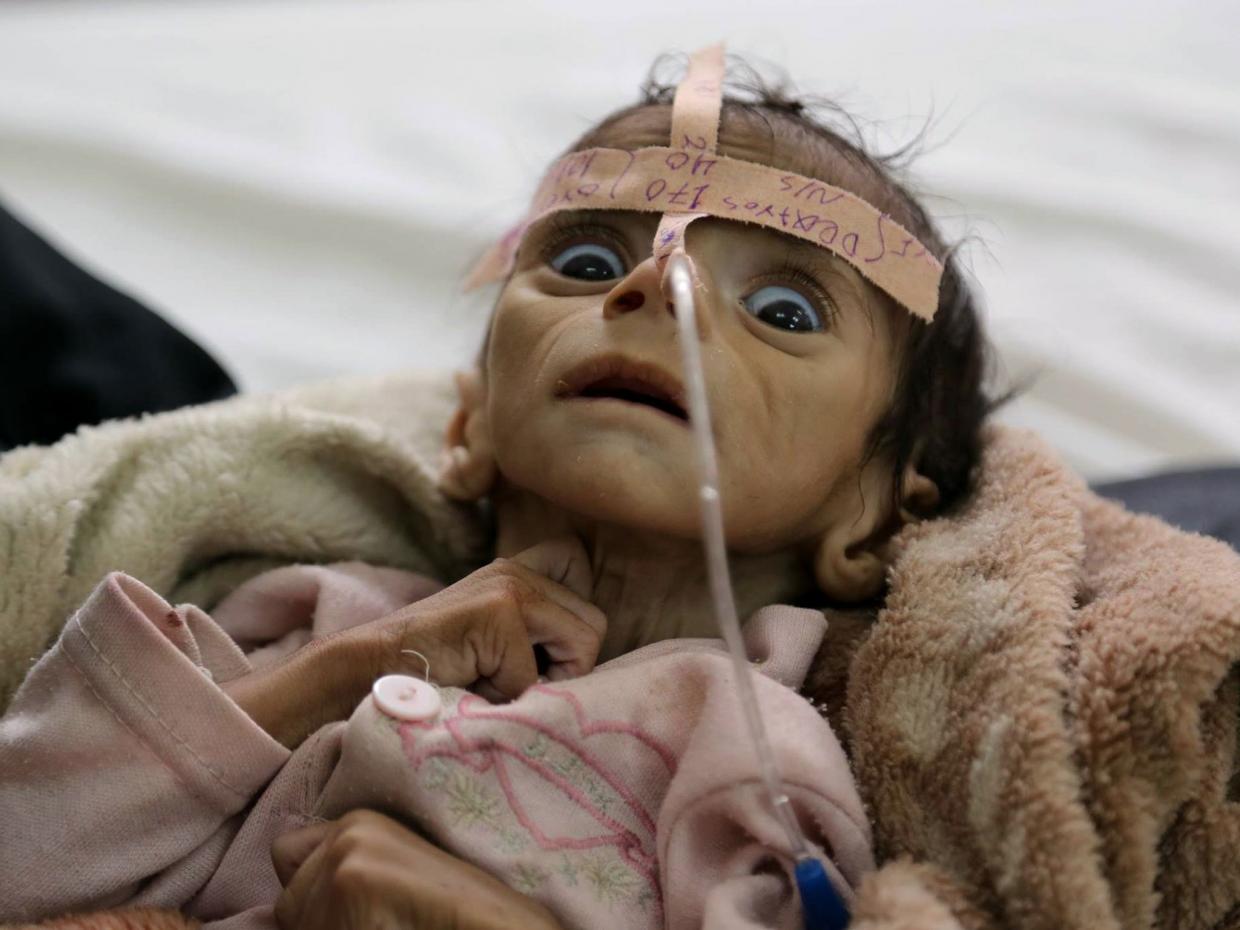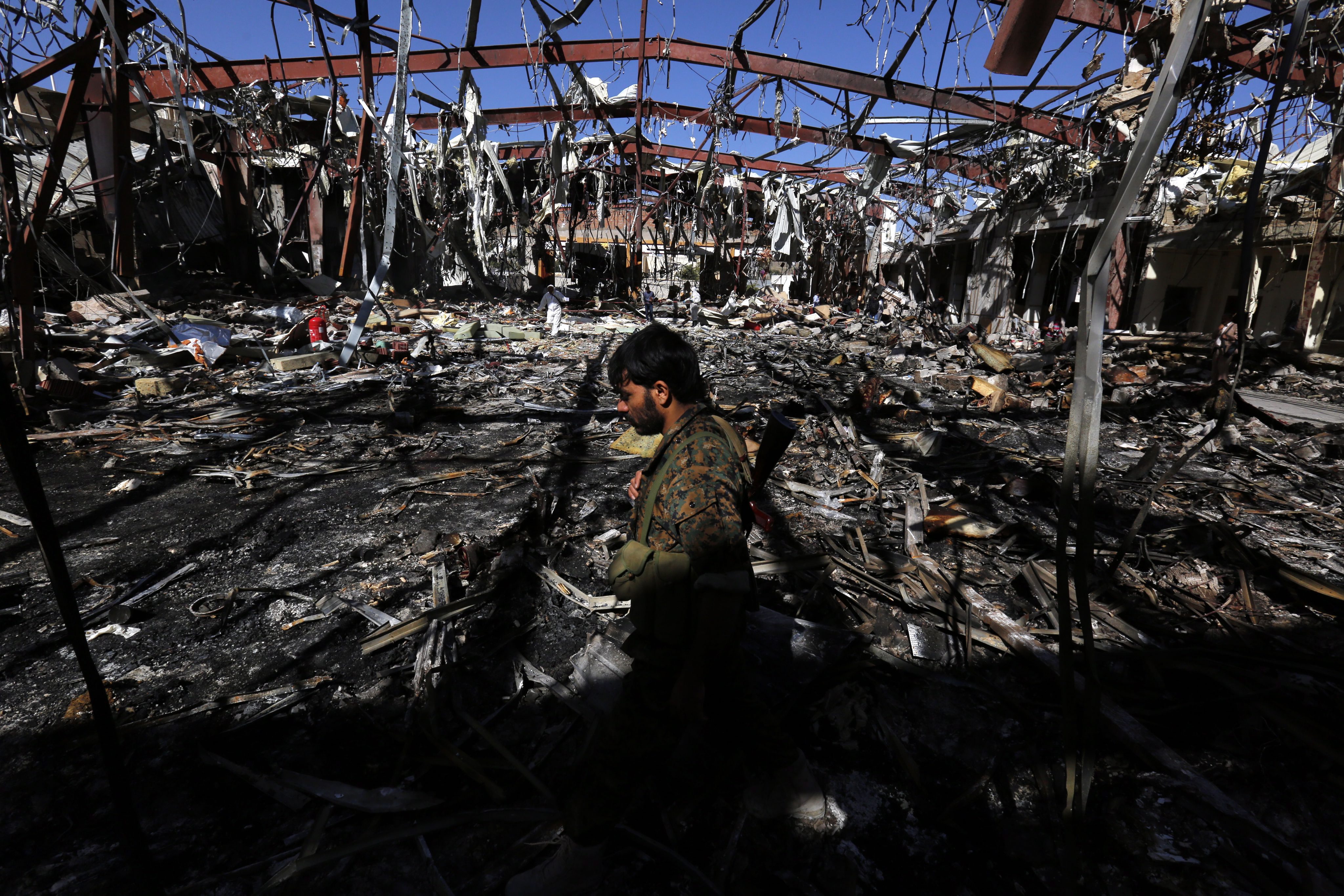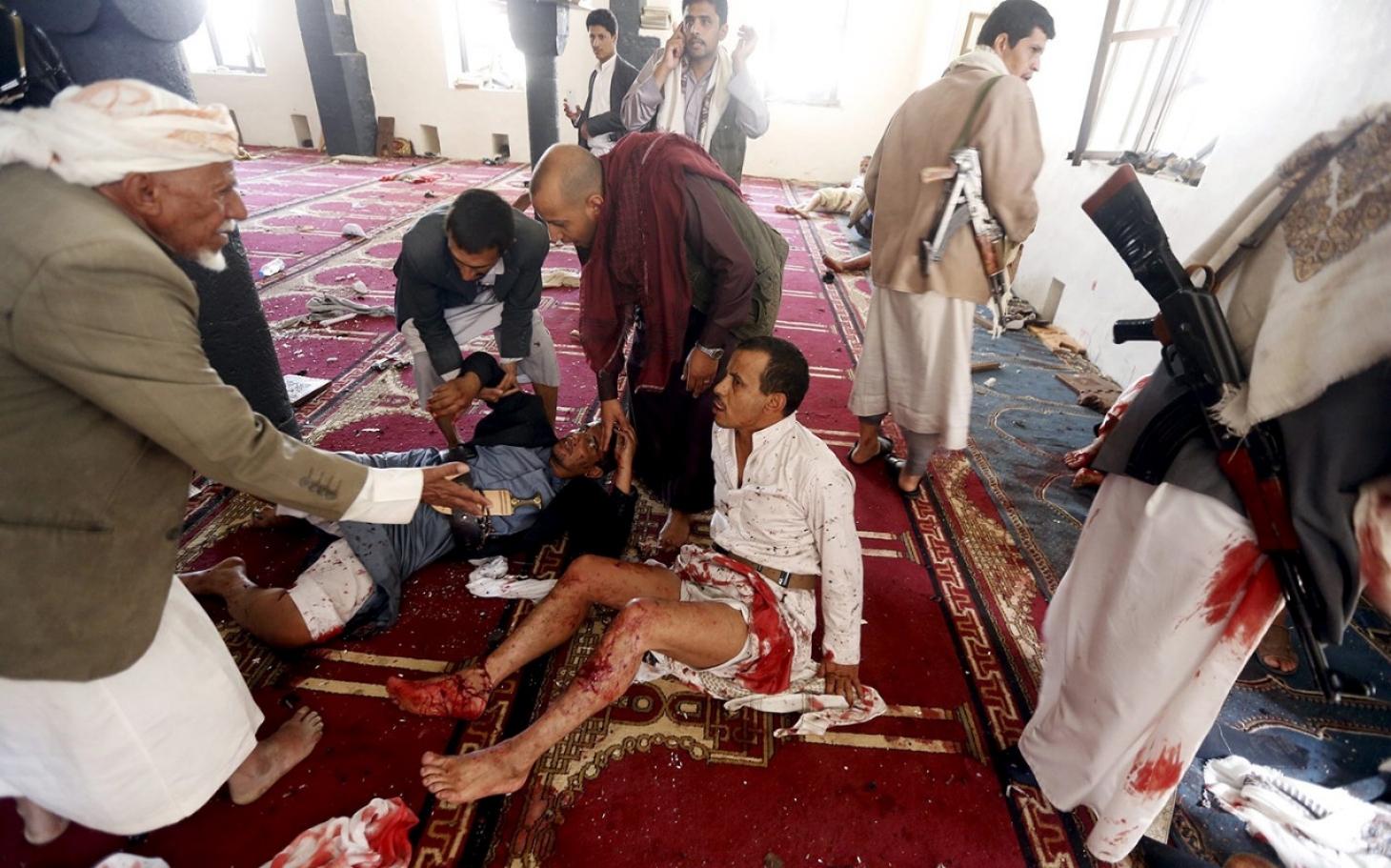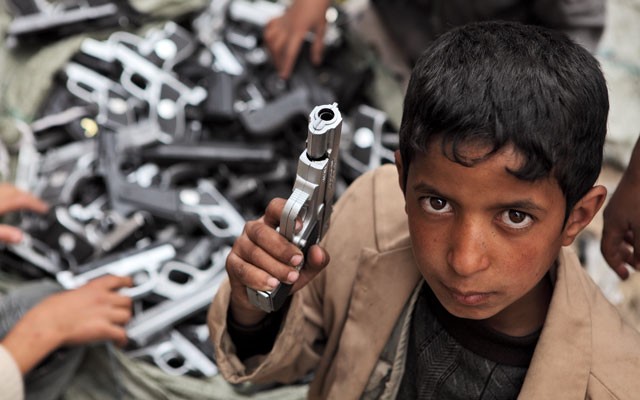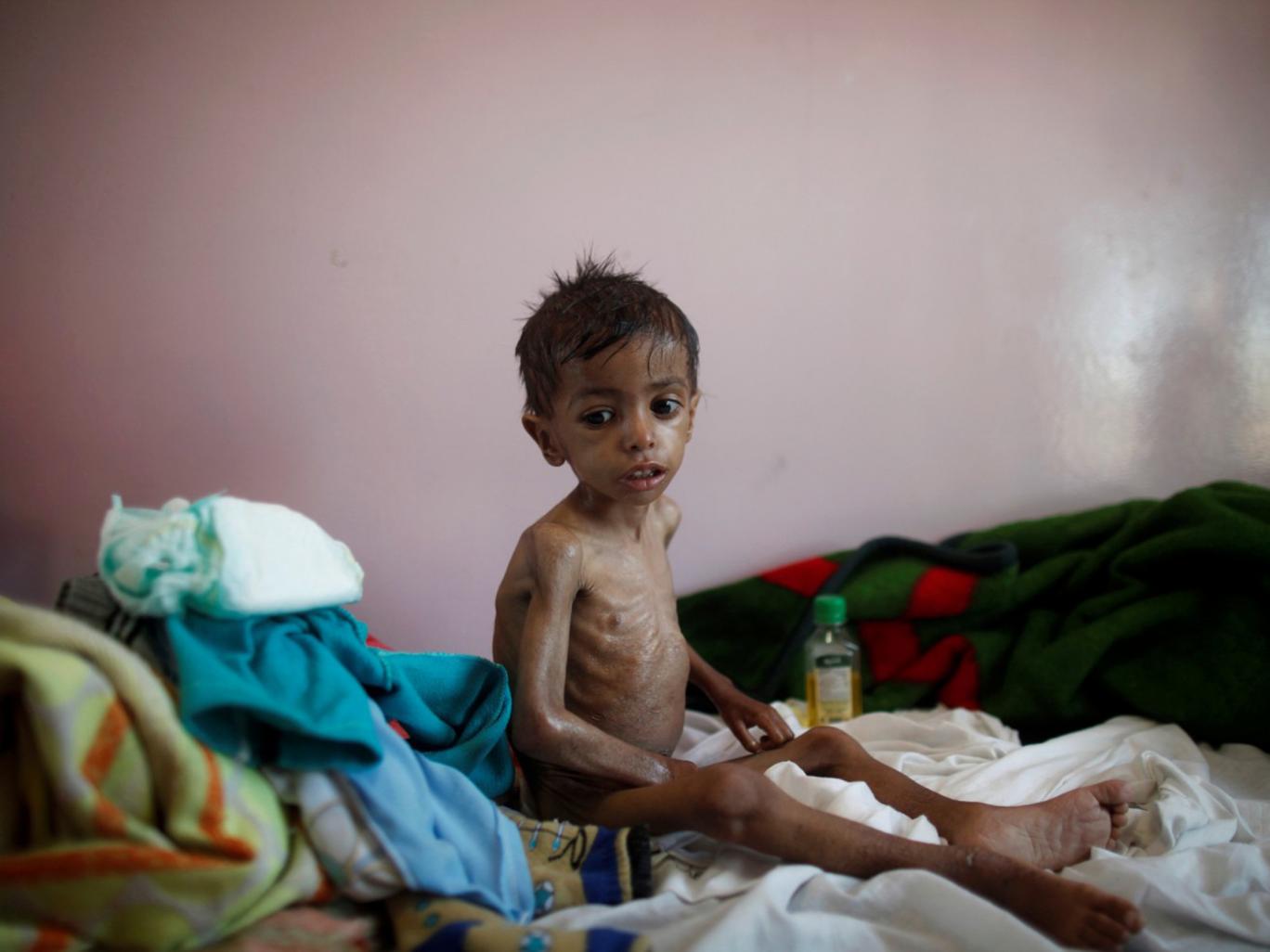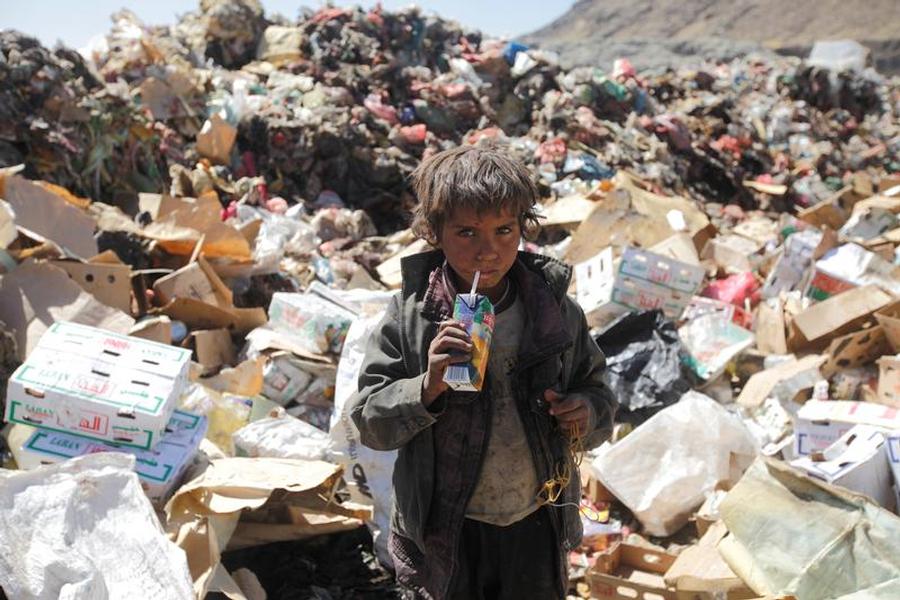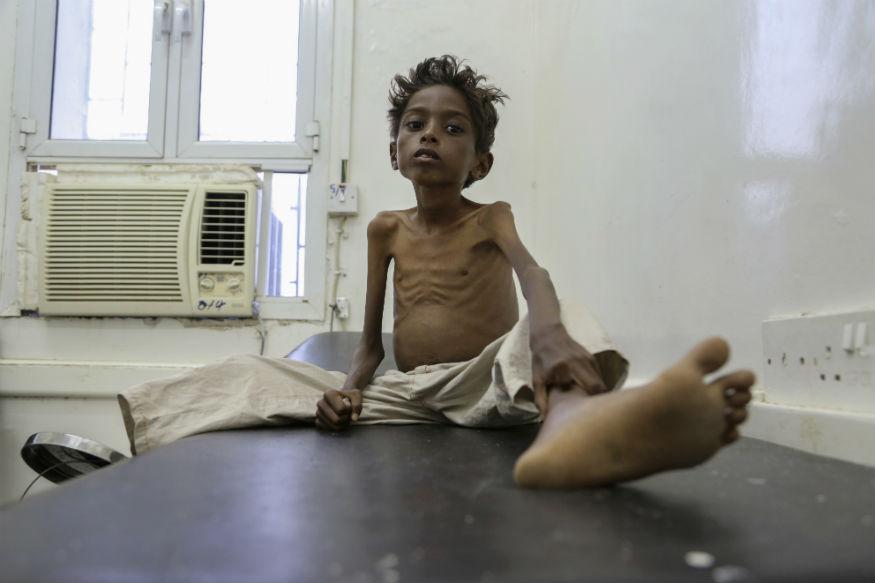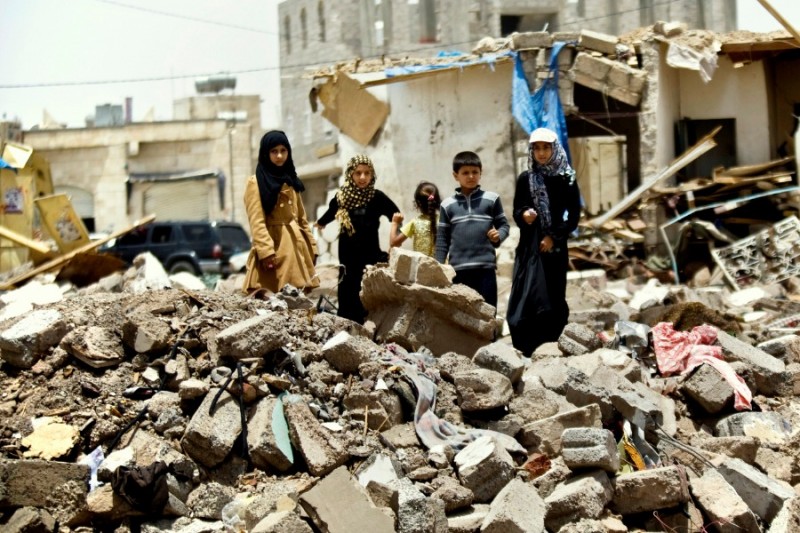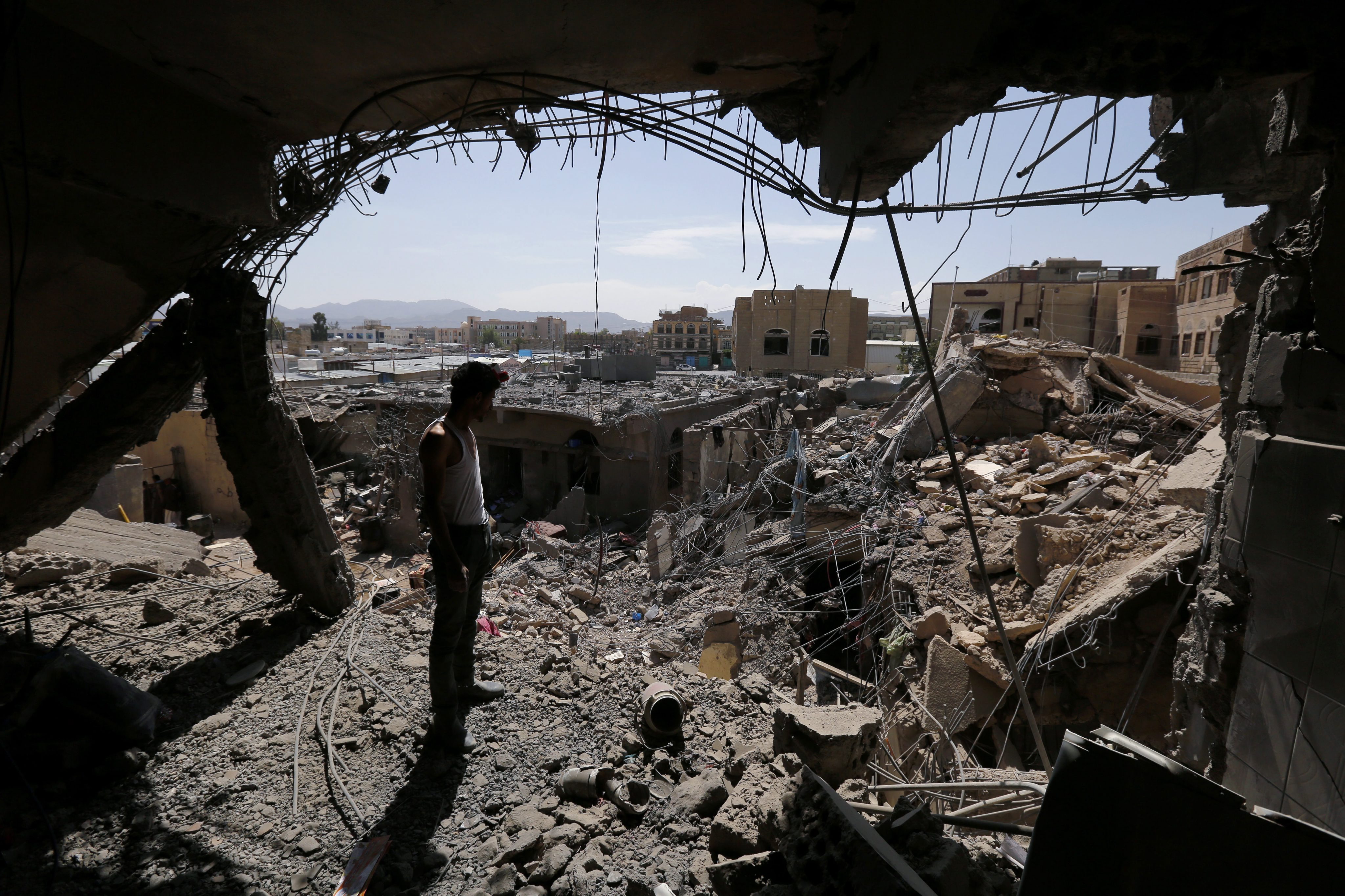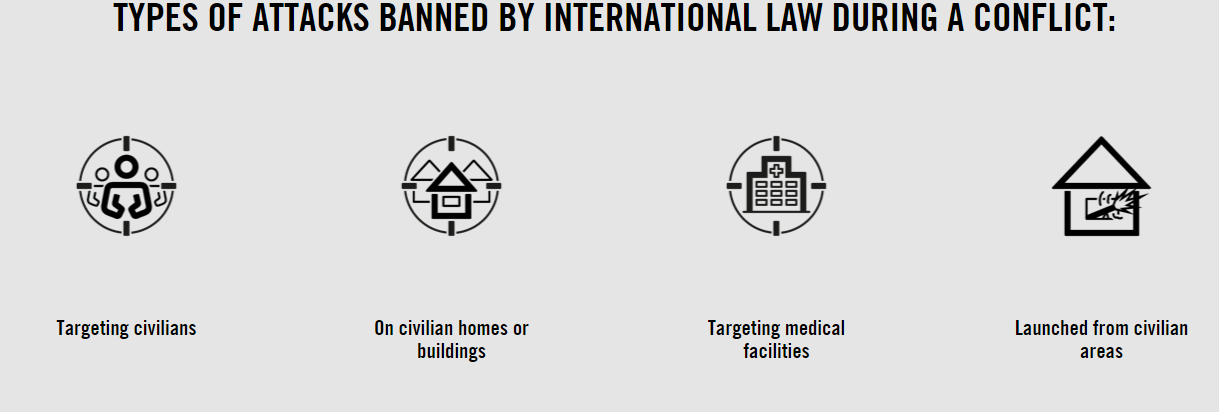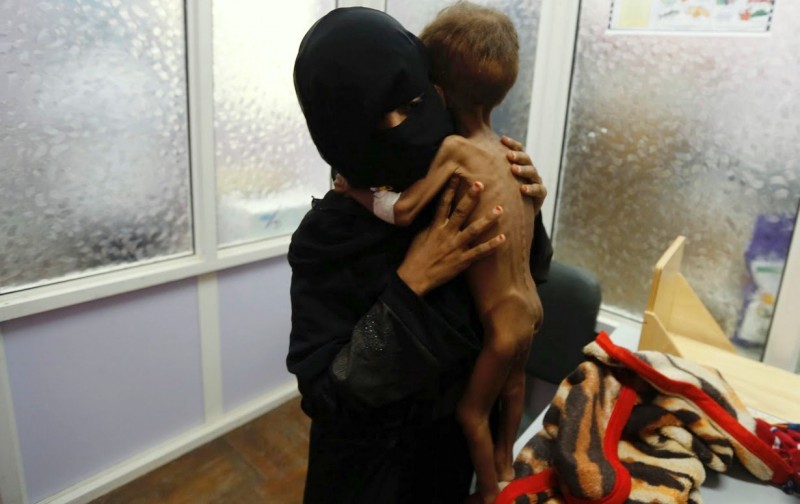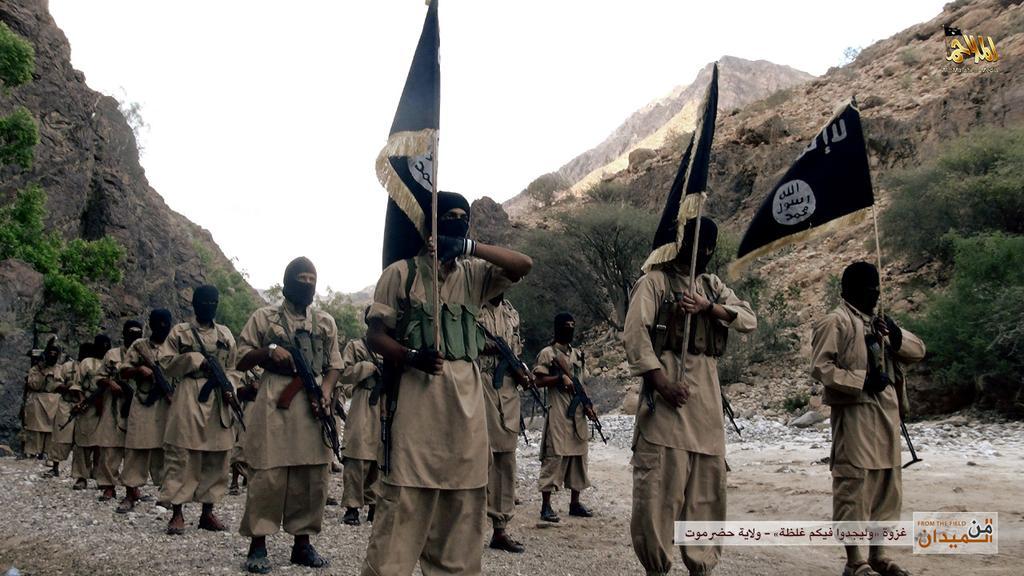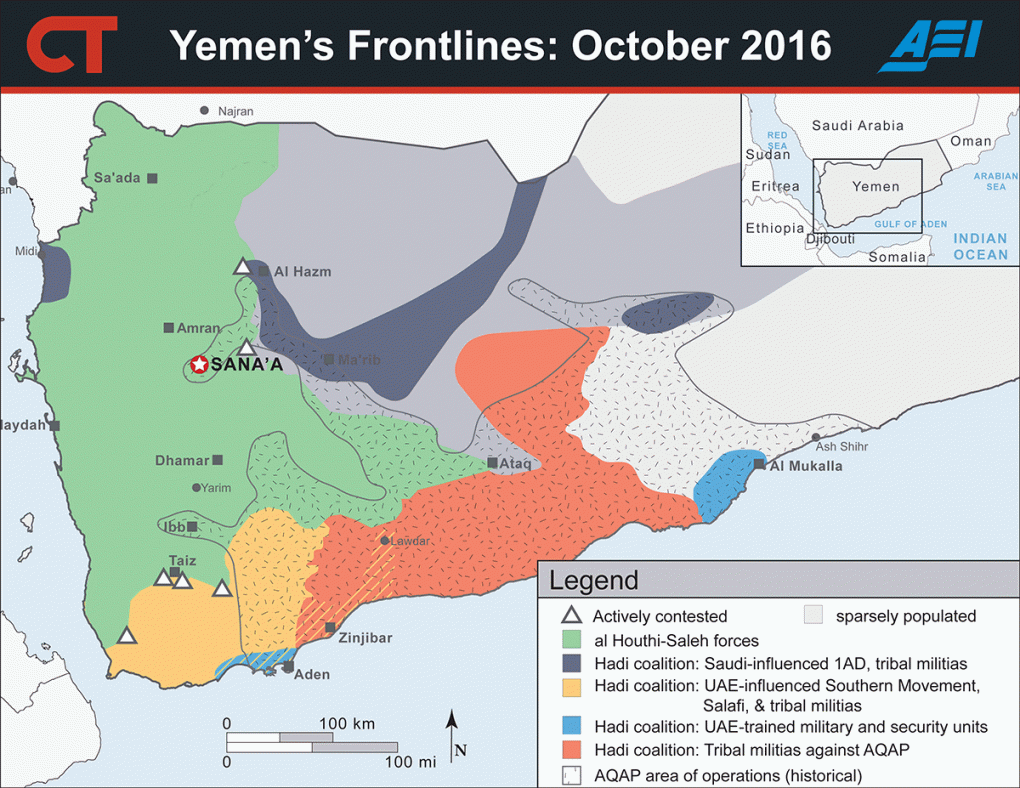Here Are 5 Things You Must Know About The Forgotten Civil War In Yemen
Arab's poorest country is going through one of the worst case of famine, poverty and destruction in the midst of a war-torn continent.
With each passing year, the number of horrific wars around the world has increased greatly. News channels are bloated with images of bloody, mangled bodies, and mass destruction of cities that were once peaceful and harmonious.
The bodies of Saudi-led airstrike victims in the rebel held port city of Hodeida on 21 September 2016.
Image via GettyFrom the Middle Eastern civil wars to the long-standing Israeli-Palestinian conflict, the past few decades alone have seen the brutal deaths of millions of people across the world.
In the 20th century, around 108 million people have died in wars including World War 1 and 2, which saw the nightmarish mass killing during the Holocaust, African civil wars, Vietnam War, and the bloody religious conflicts in Middle East, to name a few.
Meanwhile, 17 years into the 21st century, more than a million people have died as of 2017. Ancient cities have been reduced to rubble, millions have been displaced, and lost their loved ones but none of the current wars show any sign of stopping and waving the white flag of peace.
Adding to the death toll and destruction, is the civil war in Yemen that has been raging since 2015. In just a couple of years, the war in Arab's poorest country has killed at least 10,000 people and left 35,000 more injured.
In March 2016, a heartbreaking footage of a baby starving to death shocked the world. Five-month-old Udai Faisal died by vomiting yellow fluids due to starvation.
Image via Mint PressWith Middle East torn apart by multiple wars, it's pretty easy to lose track of all the different battles going on the continent. To help you better understand the Yemen Civil War, here are 5 crucial things you must know about it:
1. Why and how did the battle start? Who's fighting whom in the war?
For context, note that Yemen is traditionally divided by two main groups, the minorities made up by the Shiites who mostly live in the northeast part of the country, and the majority Sunni population living in the southeastern end of Yemen.
The Arab Spring protests that raged in Middle East led to massive demonstrations in the Yemeni capital of Sana'a which called for the resignation of then-President Ali Abdullah Saleh due to corruption charges and economic woes. The protests managed to dethrone him and his deputy at the time, Abdrabbuh Mansour Hadi, took over as the new president of Yemen.
The economic problems, political marginalisation and political struggle, topped with the constant demonstrations, led to political instability in the country. Infamous Islamic militant group, Al-Qaeda took the chance to set base in Yemen and started conducting deadly attacks in the Arabian Peninsula. They ended up establishing territory in southern Yemen.
Around the same time, an anti-government group, Shiite Houthi rebels, officially known as Ansar Allah (Supporters of God), launched an insurgency against the Yemeni government which slowly developed as a guerrilla force in a series of civil wars.
In September 2014, the Houthis managed to gain control of Yemen's capital Sana'a and continued to move towards the country's second biggest city, Aden. With slogans like, "God is great. Death to America. Death to Israel. Curse on the Jews. Victory for Islam", US, UK, and France have only intensified their support to the Yemeni government.
The Yemen civil war blew up when the Saudi Arabia-led coalition launched a military campaign in 2015 to defeat the Houthis and restore the internationally recognised Yemeni government.
The battle is basically between the Shiite Houthi rebels and Yemen's internationally-recognised government led by President Abdrabbuh Mansour Hadi with interference from the Al Qaeda terrorist group.
2. What's happening to the civilians in the midst of this bloody war?
The number of casualties are increasing rapidly, with the numbers amounting to around 10,000 people in just 18 short months, as reported by the United Nations (U.N.) August in 2016.
They said that the new death toll is based on the the official information gathered from medical facilities in Yemen. U.N Humanitarian Coordinator Jamie McGoldrick said late last year that the numbers may continue to rise as some of the places in the country do not have medical facilities and also because a lot of people are buried without any official records in situations like these.
The UN human rights office also informed that 3,799 people out of the estimated 10,000 deaths are civilians. 60% of the deaths are blamed on the Saudi-led coalition's air strikes.
The Houthis, on the other hand, have been accused of mass deaths and injuries of civilians during their siege of Taiz, Yemen's third largest city. The Houthi armed groups and the allied forces blocked the entries to crucial medical and food supplies, leading to most of the cities' hospitals to either shut down or is on the verge of shutting down due to the lack of supplies.
3. In just two years, around 14 million Yemenis have become food insecure, while 83% of the population is reliant on some form of humanitarian assistance for survival.
Not only is the death toll rising rapidly in Yemen, but the number of survivors going through severe humanitarian crisis is also adding up by the day.
Arab's poorest country was importing 90% of its food products before the civil war and the economy slump brought on by the destruction of the war has completely stalled the importation process, leaving about seven million of the Yemeni people categorised as "severely food insecure" by the World Food Programme.
A recent Al Jazeera report revealed the true extent of the state of things in Yemen. They spoke to Yemeni economist Ahmed Shamakh, who said that the war has driven Yemen into facing severe famine.
"Development has ceased in the country. Businesses have also shut down. This has largely contributed to augmenting the deterioration of the food situation in Yemen."
"Additionally, the conflict has cost a lot of Yemenis their daily jobs… Today, some civilians in Yemen do eat from the rubbish and take the leftovers they find at restaurants. This helps them survive," explained Ahmed.
The war has driven Yemen into severe famine, with many resorting to searching for food in the rubbish dumps.
Image via Abduljabbar Zeyad/ReutersA boy photographed drinking expired juice from a pile of rubbish on the outskirts of Sana'a, Yemen, 16 November 2016
Image via REUTERS/Mohamed al-Sayaghi4. How did it get to this point?
Both the Yemeni government, its supporters, and the Houthi rebels have been so caught up in battling it out against each other to the point that they have completely ignored the plight of the people stuck in between.
The coalition forces, lead by Saudi Arabia, imposed a partial naval and aerial blockade on most areas under the Houthi reign to cut off essential supplies like healthcare, food, fuel, water, and humanitarian assistance. This has in turn caused food to be scarce and limited, pushing the price to be highly expensive.
The constant air strikes have destroyed bridges, airports, and seaports, making it almost impossible for the crucial humanitarian supplies to reach the civilians.
U.N. Humanitarian Coordinator Jamie McGoldrick described the situation as "tragic" and added that "humanitarian work alone cannot solve these problems".
He said that the war has so far displaced three million Yemenis and forced more than 200,000 people to seek refuge abroad. According to the United Nations, the 900,000 Yemenis that have been displaced still want to return to their homes when the war is over.
A house in Sana'a destroyed after a Saudi-led coalition airstrike in 2015.
Image via Yahya Arhab/European Pressphoto Agency5. All the groups involved in the Yemen civil war have committed horrific violations of humans rights and international humanitarian law
According to Amnesty International, they have evidence proving that the parties involved in this Yemeni conflict have been part of actions that directly breach international humanitarian laws.
They have documented more than 30 air strikes led by the Saudi Arabia coalition across six different places, including Sana'a, Sa'da, Hajjah, Hodeidah, Ta'iz, and Lahj that infringes on "laws of war" - the rules that usually apply during a conflict. This had led to the deaths of hundreds of civilians - more than half of them were women and children.
Amnesty believes that these attacks have deliberately targeted civilians and key infrastructure such as hospitals, schools, mosques, and markets which suggests that their actions are equal to war crimes.
A survivor of an airstrike on Rafdan Ceramics Factory in Sana'a on September 2015 described the terrible experience. "I heard a whizz and knew that it was a rocket coming... I lay down and prayed out loud. I saw all my body covered in blood." The missile used in that particular attack was a British-made one.
Yemeni government's supporter, the Saudi Arabia's nine country coalition has also used cluster munitions and lethal explosive weapons that are banned under the international laws.
This is due to the fact that cluster bombs release dozens and sometimes even hundreds of small "bomblets" which usually lie unexploded, thus having the ability to cause terrible dangers and injuries long after the initial attack. It is believed that the Saudi coalition had used four different types of cluster munitions, including models that are manufactured by United States of America and Brazil.
Amal, a 25-year-old suffered multiple shrapnel injuries during rocket attacks in Aden, sometime in July 2015.
"Most of the shrapnel hit me and Hafedh (her 18-month-old son), who was on my lap. Shrapnel penetrated his head and went through to his left eye, causing internal damage. He lost his eye and is in a coma," said Amal.
Amnesty International made more shocking revelations when they investigated 30 ground attacks and found out that both the pro and anti-Houthi forces in Aden and Ta'iz did not bother to distinguish between combatants and civilians, which ended up killing civilians, including dozens of children.
To sum it up, fighters from both sides have been using imprecise weapons such as artillery and mortar fire of Grad rockets, particularly in heavily populated civilian areas and launching attacks near residential neighbourhoods, schools, and hospitals.
This is a clear violation of international humanitarian law and Amnesty says that these people can be charged for war crimes.
A woman brings her child to a hospital in Yemen to be treated for severe malnutrition.
Image via Mint Press/ Claire BernishWhat is the latest update on the civil war in Yemen?
The Al-Qaeda terrorist group has taken advantage of the political instability and chaos in Yemen, increasing its power and territory across the country.
Image via Lime CharlieThe United States launched an airstrike against the Al-Qaeda group in the remote area of al Bayda Governorate in Yemen. According to reports, it happened between 7 and 8 January, and killed a senior Al-Qaeda leader there.
They have also managed to find the whereabouts of a high ranking Al-Qaeda leader in the Arabic Peninsula (AQAP), Abd al-Ghani al-Rasas. He has apparently been on the US terrorist watch list since early 2014 who has also acted as a facilitator and planner for the Salafist Jihadi group.
The US Defense Department has since confirmed the air strike, calling it their efforts to eradicate the threats posed by Al-Qaeda.
"This operation is an example of the U.S. government and our allies' commitment to the people and the government of Yemen to detect, deter, disrupt, and defeat violent extremists who threaten progress in the region, as well as threaten to conduct terrorist attacks against innocent people in the region and around the world," explained Peter Cook, a Pentagon spokesperson, as reported by Lima Charlie news on 15 January.
An overview of Yemen's war torn areas. divided by different groups who want to gain power over the country that is known to be Arab's poorest nation.
Image via Lima Charlie
